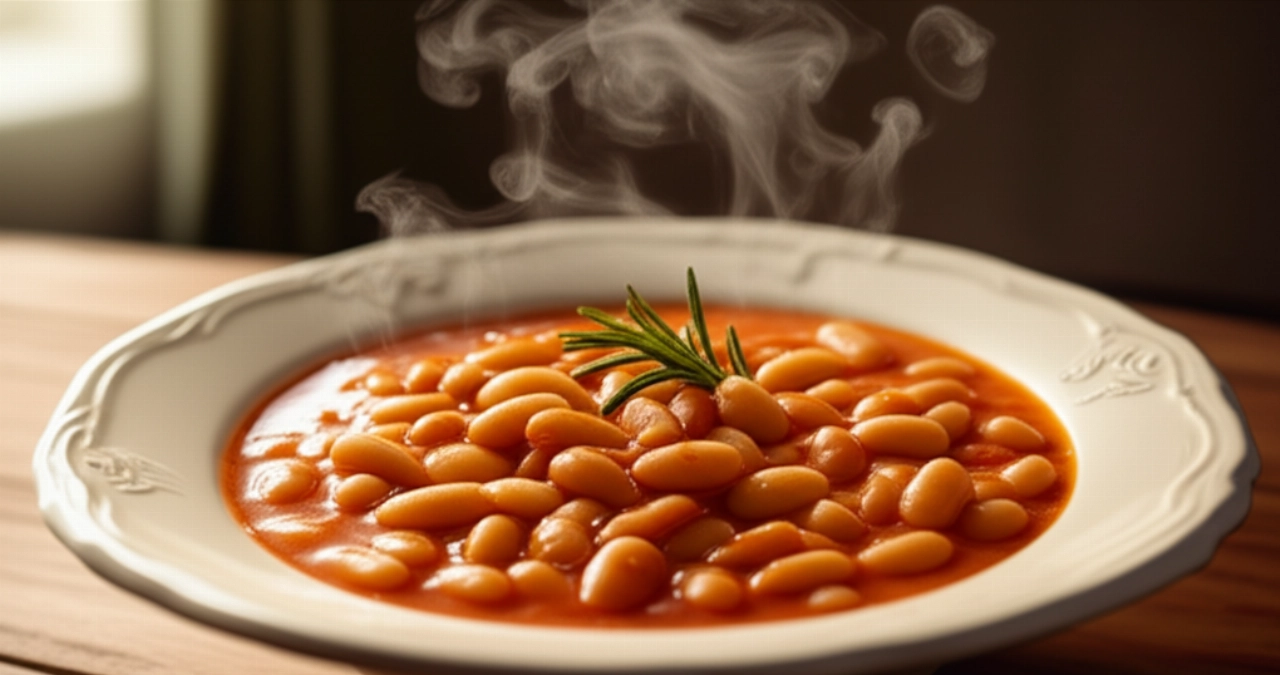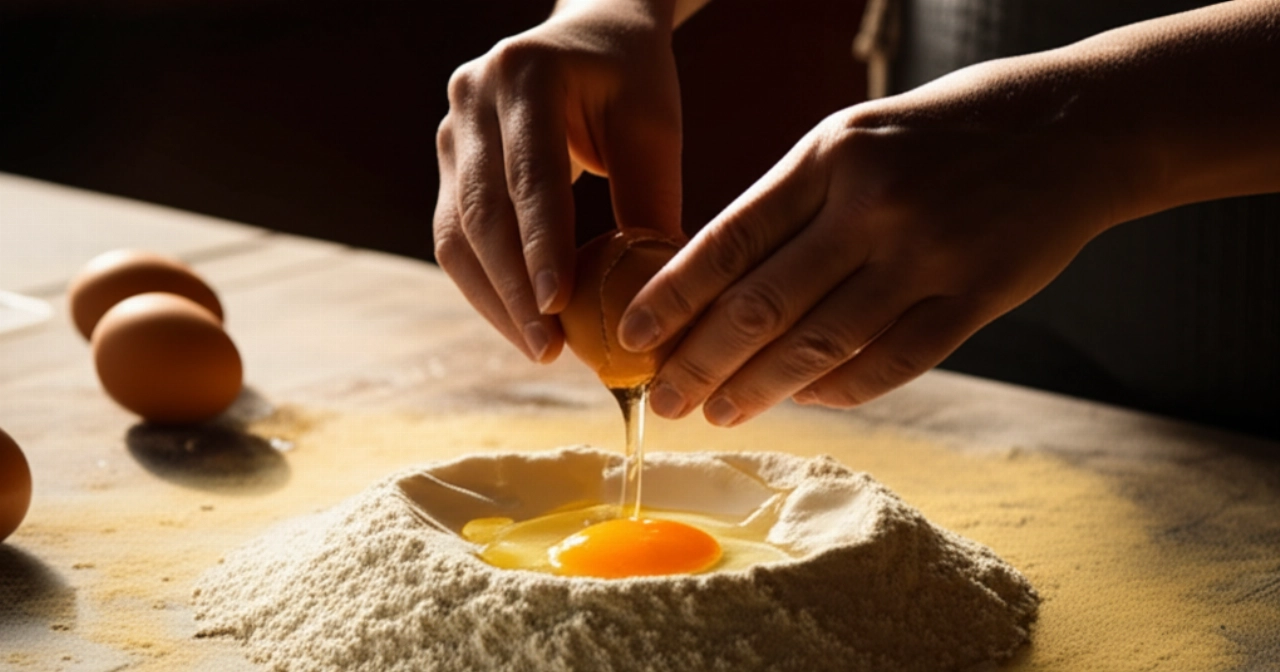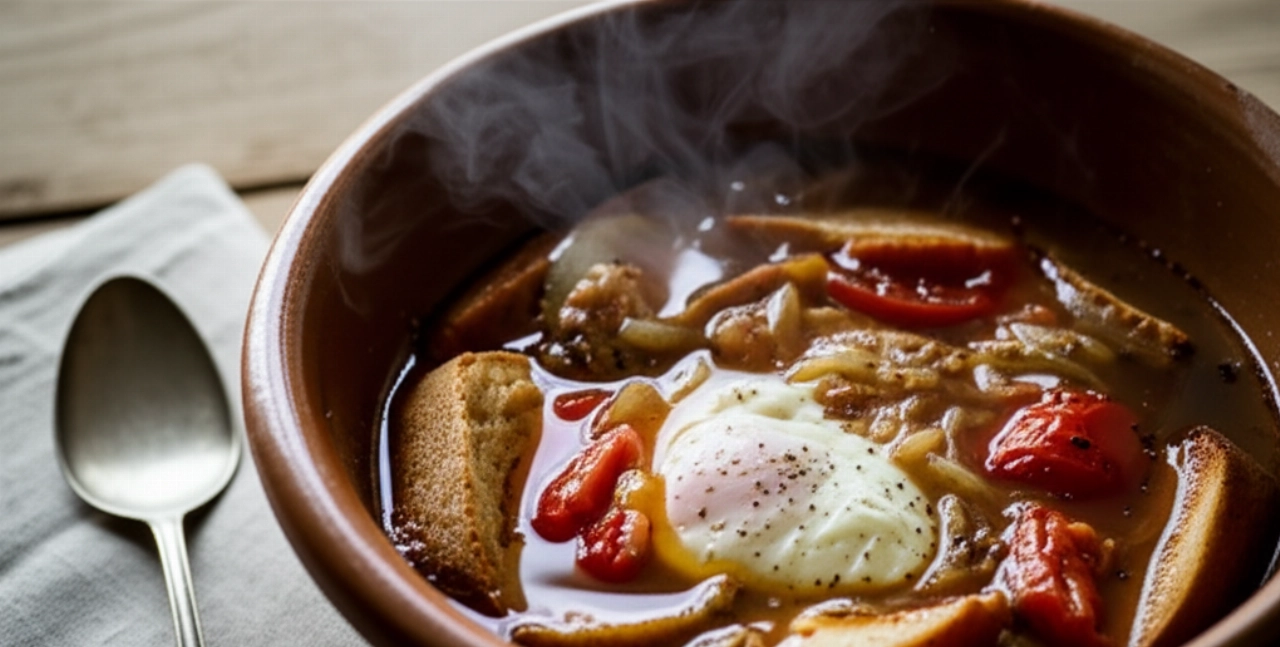Is there anything more comforting than a steaming bowl of minestrone, a warm embrace that tastes of home and well-being? It's the dish that takes us back to childhood, to genuine flavors, to the aroma that fills the kitchen. But how many times have you tried to make it and it turned out bland, with overcooked vegetables, or, worse, a soulless hodgepodge? Finding 'the right' recipe, the one that makes you say 'wow', seems like a challenge.
Fear not! Here you won't find a simple list of ingredients, but a complete guide, full of secrets and practical tips, to prepare the most flavorful, rich, and perfect Vegetable Minestrone you've ever tasted. I guarantee a success that smells of tradition and health. Our strategic focus for this recipe is AUTHENTIC FLAVOR AND PERFECT CONSISTENCY. I'll guide you step by step for a minestrone that is not just a dish, but a warm embrace, rich in flavor and with every vegetable in its place, never overcooked, just like grandma used to make it, using tricks to enhance every single ingredient.
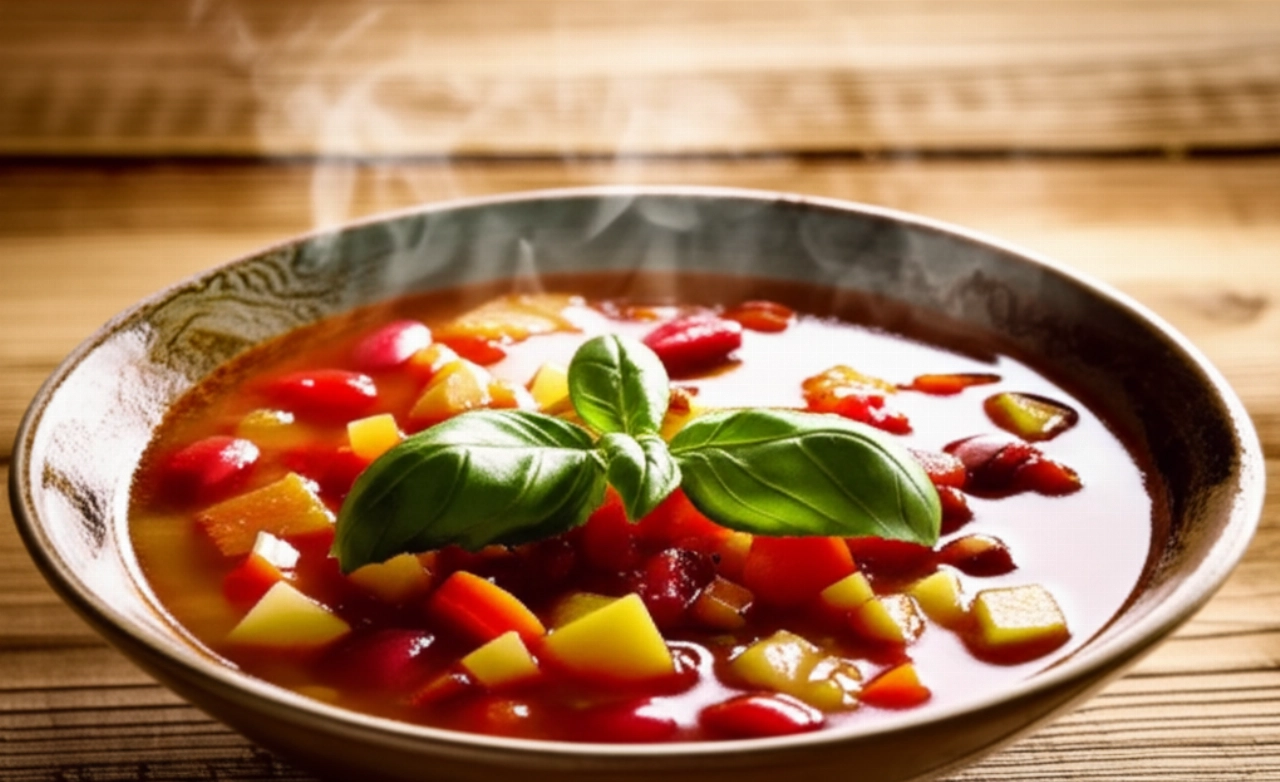
Smart Ingredients for a Fabulous Minestrone: The Choice That Matters
An excellent minestrone starts with the selection of raw ingredients. Don't just limit yourself to 'mixed vegetables', but choose carefully to ensure flavor and consistency.
- Fresh Seasonal Vegetables: This is the heart of your minestrone. Choose at least 5-7 different types for a mix of flavors and colors. Think carrots, celery, onions (the base of the soffritto), potatoes (to add body), zucchini, green beans, black cabbage, spinach, chard, pumpkin (if in season), and ripe tomatoes (or quality tomato passata). Variety is essential for a complex and satisfying flavor.
- Dried or Canned Legumes: Beans (borlotti, cannellini) and lentils are perfect for enriching the minestrone with protein and fiber. If using dried ones, remember to soak them the night before. Canned ones, well rinsed, are a valid alternative to save time.
- Homemade Vegetable Broth: Forget the bouillon cube! A good vegetable broth is the soul of minestrone. Prepare it with carrots, celery, onion, parsley, and a few cherry tomatoes. If you don't have time, choose an excellent quality organic vegetable broth.
- Extra Virgin Olive Oil: A good EVO oil is the base of the soffritto and the final raw touch. Choose an oil with a fruity but not too aggressive flavor.
- Fresh Herbs: Parsley, basil, rosemary, thyme. Use them generously, adding them at different stages of cooking to enhance their aromas.
- Salt and Black Pepper: Adjust the flavor only at the end, to avoid over-salting the vegetables as they reduce.
- Parmigiano Reggiano (or Grana Padano): For serving and, if you wish, a Parmigiano rind to cook in the minestrone for an unmistakable flavor.
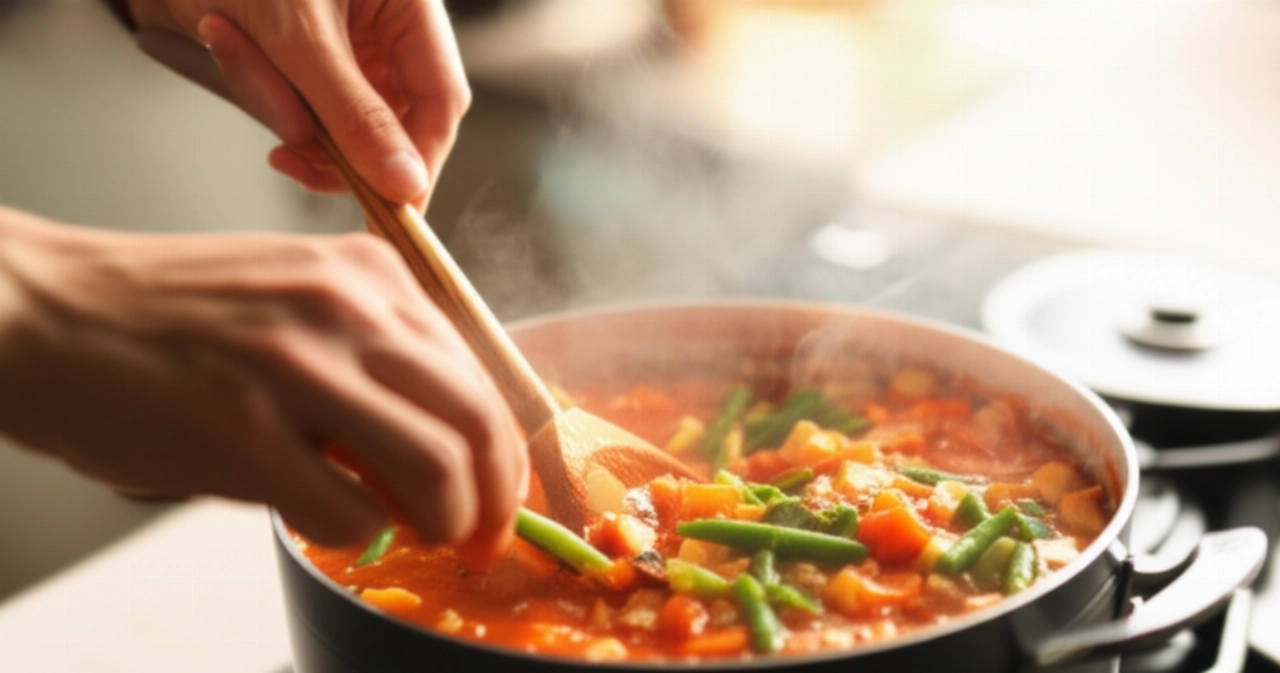
The 3 Common Minestrone Mistakes (and How to Avoid Them for a Perfect Result)
Even a seemingly simple dish like minestrone hides pitfalls. Here are the most common mistakes that prevent you from achieving a show-stopping result, and how to avoid them:
- Cooking All Vegetables Together: This is the number one mistake that leads to overcooked and mushy vegetables. Each vegetable has a different cooking time. Potatoes and carrots, for example, require more time than zucchini or spinach. The secret is to add them in sequence, from the hardest to the most tender, to ensure that each ingredient maintains its consistency and flavor.
- Insufficient or Burnt Soffritto: The soffritto is the flavor base of your minestrone. If it's too little or, worse, burnt, it will compromise the entire dish. It should be sweet, golden, and fragrant. Use a low flame and don't rush. This is where the taste is built.
- Using Only Water (or Poor Quality Broth): Water has no flavor and will dilute the taste of your vegetables. A good vegetable broth is essential to give depth and richness to the minestrone. If you don't have time to make it at home, invest in a high-quality vegetable broth, preferably organic and without additives.

Grandma's Secret for a Minestrone Rich in Flavor and Consistency
My grandmother always said that the secret to a good minestrone is not just the quality of the vegetables, but the 'time' you dedicate to it and a little trick that few know. Besides the patience in preparing each vegetable and following the cooking times, she always added a Parmigiano Reggiano rind to the broth during cooking. It seems like a small detail, but this rind, slowly releasing its aromas, gives the minestrone an incredible savoriness and depth of flavor, transforming a simple broth into a golden nectar. Try it and you'll taste the difference!
Let's Prepare Vegetable Minestrone Together: The Step-by-Step Guide
Ingredients (for 6-8 servings):
- 2 medium carrots
- 2 celery stalks
- 1 large onion
- 2 medium potatoes
- 1 large zucchini
- 100 g green beans
- 100 g black cabbage (or savoy cabbage)
- 100 g fresh spinach
- 200 g borlotti beans (pre-cooked or soaked dried)
- 100 g lentils (pre-cooked or soaked dried)
- 400 g peeled tomatoes (or tomato passata)
- 2 liters hot vegetable broth
- Extra virgin olive oil q.b. (as needed)
- Salt and black pepper q.b. (as needed)
- Fresh chopped parsley for garnish
- Parmigiano Reggiano rind (optional)
- Grated Parmigiano Reggiano for serving
Method:
- Prepare the Vegetables: Wash and clean all vegetables. Finely chop the onion, celery, and carrots for the soffritto. Dice the potatoes and pumpkin (if using) into regular cubes. Slice the zucchini and green beans into rounds. Shred the black cabbage and spinach. Uniformity of cutting is important for even cooking.
- Prepare the Soffritto: In a large, heavy-bottomed pot (ideally cast iron), pour a generous drizzle of EVO oil. Add the chopped onion and sauté over low heat for about 5 minutes, until translucent. Then add the chopped celery and carrots and continue to sauté for another 5-7 minutes, stirring often, until soft and fragrant.
- Add Harder Vegetables: Combine the potatoes and black cabbage (or savoy cabbage) with the soffritto. Mix well and sauté for a few minutes to let the flavors meld. If using the Parmigiano rind, this is the time to add it.
- Add Legumes and Tomato: Incorporate the beans and lentils (if using soaked dried ones, add them here; if pre-cooked, wait a bit). Add the peeled tomatoes (crush them with a fork) or passata. Stir and let cook for about 5 minutes, so the flavors combine.
- Pour in the Broth: Cover all the vegetables with hot vegetable broth. Bring to a boil, then reduce the heat to minimum, cover with a lid, and let simmer gently for at least 30-40 minutes.
- Add Tender Vegetables: After the initial cooking time, add the zucchini, green beans, and spinach. Continue cooking for another 15-20 minutes, or until all vegetables are tender but still firm, never mushy.
- Adjust Seasoning: Taste the minestrone and adjust salt and pepper. If necessary, add more hot broth to reach the desired consistency.
- Serve: Remove the Parmigiano rind (if used). Serve the minestrone hot, with a drizzle of raw EVO oil and a generous sprinkle of grated Parmigiano Reggiano. A touch of fresh chopped parsley will complete the masterpiece.
Tips and Frequently Asked Questions about Vegetable Minestrone
Here are some of the most common questions you might have about minestrone, with answers to ensure even greater success:
Can I use frozen vegetables?
Yes, you can, especially if you're short on time. Choose a good quality minestrone vegetable mix. However, keep in mind that the flavor and texture might not be as rich as with fresh seasonal vegetables. If you use them, add them directly to the broth without thawing, but pay attention to cooking times.
How can I store leftover minestrone?
Minestrone is also excellent the next day! You can store it in the refrigerator in an airtight container for 3-4 days. It's also great for freezing: divide it into portions and freeze in appropriate containers or food bags. It keeps for 2-3 months. Thaw in the refrigerator or directly in a pot over low heat.
Can I make it creamier?
Certainly! If you prefer a more velvety consistency, you can take a couple of ladles of cooked minestrone (perhaps with some potatoes) and blend them with an immersion blender, then reincorporate them into the pot. This will make it thicker and more enveloping without adding fat.
What are the 'essential' vegetables for a good minestrone?
The fundamental bases for a traditional-tasting minestrone are the soffritto (onion, carrot, celery) and potatoes, which give body and creaminess. From there, you can customize with the seasonal vegetables you prefer or have available.
Can I add pasta or rice?
Absolutely! Many love minestrone enriched with short pasta (ditalini, tubetti) or rice. Add them in the last 10-15 minutes of cooking, directly to the minestrone, adjusting the amount of broth if necessary. Remember that pasta or rice will absorb a lot of liquid, so if you plan to store it, it's better to cook them separately and add them when serving.
An Embrace of Flavor and Well-being: Your Perfect Minestrone
There you have it! Now you no longer just have a recipe, but all the secrets to bring to the table a minestrone that tastes of home, tradition, and love. A dish that will make you feel like a true chef, capable of nourishing body and soul with simple ingredients prepared with mastery.
Don't be afraid to get cooking. Every spoonful will be a triumph of flavor and well-being. Your kitchen will become the place where tradition meets perfection, and applause will not be lacking. This minestrone, rich in seasonal vegetables and with the right consistency, is the perfect one-dish meal for any occasion, a true comfort food that celebrates the Mediterranean diet.
Have you prepared your Vegetable Minestrone? Share your experience in the comments below! We'd love to know how it turned out and which vegetables you chose. Don't forget to tag us on Instagram @CercaRicette.it! And if you love healthy and comforting dishes, also discover our recipe for Winter Legume Soup or Homemade Tomato Sauce, perfect to accompany your dishes.

